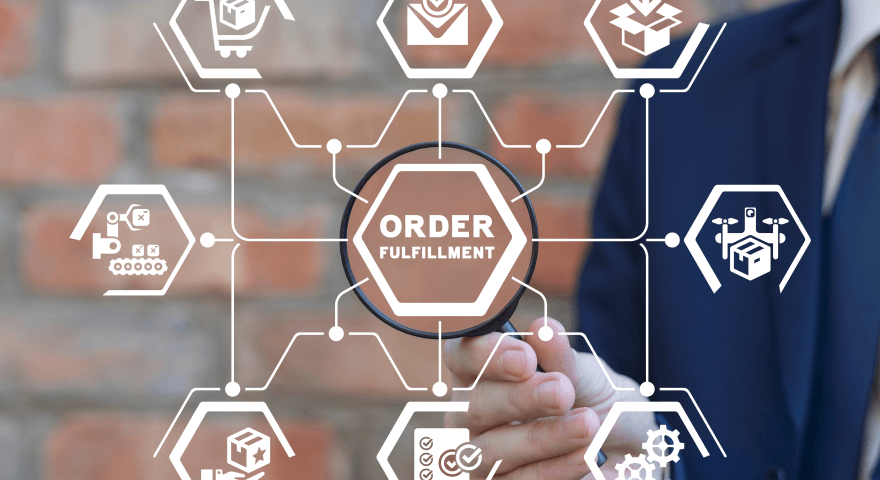The main aim of the digitalization of supply chain management is to simplify the management of the complex, interconnected processes of the supply chain. Moreover, for the digitalization of tactical decision-making, a digital model of the decision-making process is necessary. This is because every digital technology runs on rules, algorithms, and frameworks, learned or discovered.
However, tactical processes in the supply chain are still highly disorganized and run mainly on the whims of the supply chain manager. According to a study by McKinsey, underinvestment is one of the main reasons the supply chain is one of the least digitized departments in industries at just 43% compared to the digitization of products and services at 60%, and digitization of processes at 52%.
The chart below illustrates a detailed comparison of the effect of digitization on EBIT (earnings before interest and taxes) and revenue related to the current growth trajectory (represented as 0). Y-axis scales to different values.

But why is it difficult to digitalize tactical processes?
Every process needs some templates and protocols to run within a framework. If there is no rule, there would be no basis for making decisions. Two people may have two different opinions about the next step. In a large industry, this will spell disaster because every decision taken may have a ripple effect on every downward process.
So, if there is no way to tell which decision was taken when by whom, this creates a bottleneck of uncertainty and puts a brake on the processes below.
Imagine if a supply chain lacking standardized decision-making processes is to be run digitally, without leveraging the power of analytics and an execution management system.
Then, three things can happen:
- If the technology is applied to the tactical process with low standardization itself, someone will have to keep making decisions and instructions to run the technology. This defeats the entire purpose of digital automation.
- Next, if the tactical process is bottom-up, it could create bottlenecks, and the automated system may not run at its potential speed.
- On the other hand, if the tactical process is top-down, it may slow down every different process below it, thus ultimately nullifying all the advantages granted by the digitalization process.
So, how can you digitalize tactical processes?
Many people believe that digitalizing decision-making and tactical processes will result in a loss of flexibility in the whole system. With supply chains incorporating more supplier and customer channels and trying to stay on top of customized orders, it can be easy to see the idea of further digitalizing the entire decision and execution space.
However, the beauty of digitalization is that by leveraging the most up-to-date technologies like data analytics, AI, ML, DL, Big Data, and so on, one can digitalize these tactical processes without having to compromise on flexibility.
Moreover, by creating a digital footprint of each decision and action taken, one builds the foundation for better ways of capturing decisions in the future, better assisting human decision-making, and finally, further assisting the automation of complex processes.
Data analytics will provide 360-degree visibility of any system. Leveraging this, machine learning, or even better, deep learning technologies can detect and learn patterns and trends in the data that are otherwise invisible and indiscernible to humans.
What are the advantages of digitalizing tactical processes?
Besides the obvious pros of digitalization in general, the less realized advantages of digitalizing tactical processes are:
- Digitalization of the less standardized processes will remove the black boxes in tactical supply chain management and allow greater end-to-end visibility and transparency.
- Enhanced visibility will enable the supply chain managers to partake in informed decision-making and accurate forecasting, thus reducing risks and allowing better disaster mitigation and management.
- When even tactical processes get digitalized, it creates a fully digitalized supply chain that allows smoother and faster execution.
- Scalability and fast adaptation no longer remain a hassle.
- Digitalizing the tactical processes brings unproductive elements and parts in the supply chain under control. It also allows lean management principles to be applied to less frequent activities as typically seen in supply chain management.
Some examples of tactical supply chain processes that need digitalization
Product availability and risk management are two areas where the supply chain greatly lacks standardization and, thus, is fraught with uncertainties. These areas need to be standardized for the supply chain to achieve full digitalization and considerably increase financial value contribution.
These areas need to be connected to a sophisticated data procurement and analytics software application that can detect patterns and possible trends in real-time. These can then be fed into an execution management system specializing in making actionable decisions, thus removing the lack of standardization altogether.
The supply chain is simultaneously the most focused on and the most lagging in the digitalization department, and this can only be changed by digitalizing the tactical processes of the supply chain.
Apart from that, underinvestment could also increase the need for innovative technologies addressing the needs of next-generation supply chains. Today, a new niche of platforms is emerging and helping to fix this – Digital Execution Systems. Their application isn’t limited to supply chain: showing its value in different use cases will be the next step.





.jpg)



.png)
